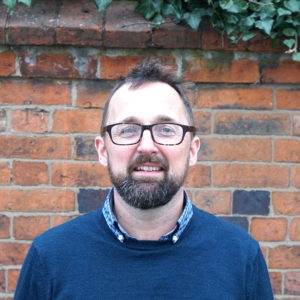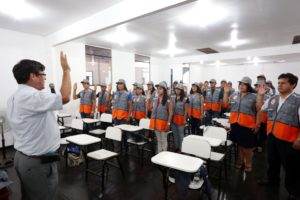How teamwork is stopping floods becoming disasters: Expert Q&A

Chris Anderson, Flood Resilience Project Manager
Floods devastate more lives around the world than any other natural hazard. Climate change is making flooding more frequent and more severe. The Zurich Flood Resilience Alliance is a partnership of nine international organisations, including Practical Action, who work together with communities to find solutions.
We began in 2015, working with communities in Nepal, Peru and Bangladesh. By using innovative early warning systems and creating detailed action plans, many of these communities have increased flood warning time from mere minutes to several hours. When floods come, people are equipped and prepared to save lives and protect livelihoods. Thanks to the success of the program, we’ve now begun expanding to Bolivia, Senegal and Zimbabwe.
In this Q&A, flood resilience project manager, Chris Anderson talks about the role of teamwork in the success of the Alliance.
Who are the partners involved in the Alliance?
Firstly, there’s Zurich themselves. Although the Zurich Foundation funds the work, Zurich, the business, is very much a part of the Alliance. It’s one of the technical partners. We work with four other implementing members. Plan International, Concern Worldwide, Mercy Corps, and the International Federation of the Red Cross. They’re the ones that implement activities on the ground.
There are three research institutes as well. IIASA, which is the International Institute of Applied Systems Analysis, based in Vienna. The London School of Economics, and ISET, which stands for the Institute of Sustainable Environmental Transition – they’re based in the USA.
What prompted Zurich’s involvement in this work?
Their original motivation was to position themselves as the go-to global insurer on floods because floods generate more economic losses than any other natural hazard. And they’re a corporate insurer – so that means that they work long term to reduce the residual risk facing their clients. They wanted to use their expertise to help the communities who are most at risk from flooding.
Do the other implementing partners bring different skills to the Alliance?
Yes – it’s very much about teamwork and bringing different skills to the table. For example, the Federation of the Red Cross have chapters in well over 130 countries. They have a huge footprint on the ground and also a focus on humanitarian relief. Having them as a member of the alliance gives us some muscle in terms of advocating about humanitarian issues. They also have a very close relationship with governments in each country.

We work with local volunteers to support our work with communities – this brigade of volunteers are based in Piura, Peru.
How do you work with communities themselves?
We go into communities, work with them and local authorities to understand all of the things that make at risk to flooding in their context. And then with the data from that, we influence them and the local government and the national government to invest in more proactively any number of things that will reduce their risk to flooding.
What part do the research partners play?
Research institutes help us develop the research methodology and also to analyse the data that’s coming out. All of this data that’s being collected by all of the partners in about 25 countries goes into a global dataset, which is growing all the time. The research partners help us understand and interpret the data.
How do you work with decision-makers?
We support communities to understand and articulate their own priorities, which then we use to influence local government. The local government invests directly in that local development planning and budgeting in the priorities that the community have expressed as a result of the process.
We also work to influence national policy and budgetary setup. We try to improve the amounts and the quality of investment by governments themselves. But we aim to influence other international development organisations as well, to shape their priorities so that they work with their own partners, governments and others to invest.
Who else is involved in the success of the Alliance?
Our work improving ecosystems requires working with environment technicians and environment ministries, and potentially with water and sanitation providers too. It depends on what the needs are in that place, at that time.
In every country, we work with a selection of communities – civil society more broadly – and local to national government. And in each of the countries we work in, we have partnerships with other research institutes to help on particular technology challenges. So, for example, in Peru, we’re partnering with Bristol University. In Nepal, in the past, we’ve partnered with Edinburgh University and Durham University. We bring in expertise as and when we need it. And often, people approach us to apply their own research and demonstrate it as well.
Do you work with same types of organisations in each country?
Not necessarily. What’s fundamental to our approach is that we’ve taken a systems view of the problem. We define the problem and then think systemically about the components of that system. We do stakeholder analysis in each place and identify who we need to work with. Exactly who is involved depends on the situation.
What has all this collaboration achieved?
In Peru, we worked alongside a national meteorology department and communities to put early warning systems in place. We demonstrated the success of this work to the national government of Peru. They were so impressed that in 2019 they announced a $13 million investment in establishing and expanding its coverage of early warning systems in the country.
Read more about the work of the Zurich Flood Resilience Alliance.